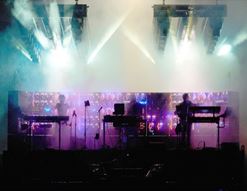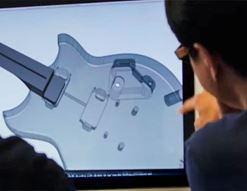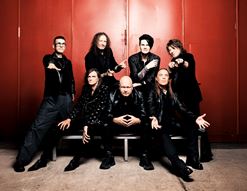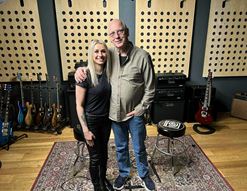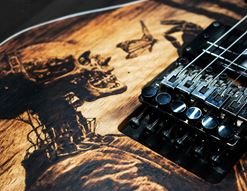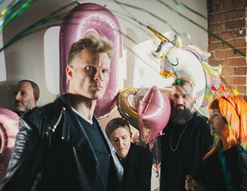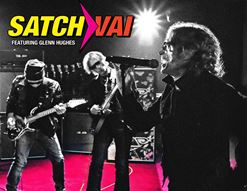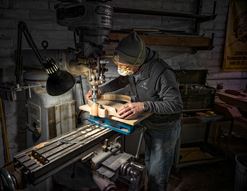What’s your favourite EarthQuaker Devices pedal?
Everyone has a favourite. Is it the ferocious Hoof fuzz? The brilliantly ‘Space-Rock’ Hummingbird? The beautifully bonkers Rainbow Machine? This boutique brand form Akron, Ohio, has come a long way since its initial two-person operation back in the early noughties. But I'm getting ahead of myself here! Company CEO Julie Robbins can tell the story much better herself, since she's been a significant part of it since the beginning! I spoke to her on Zoom about the ins & outs of being anot-so-small pedal builder in today's climate for expressive effects. Here's the full transcription...
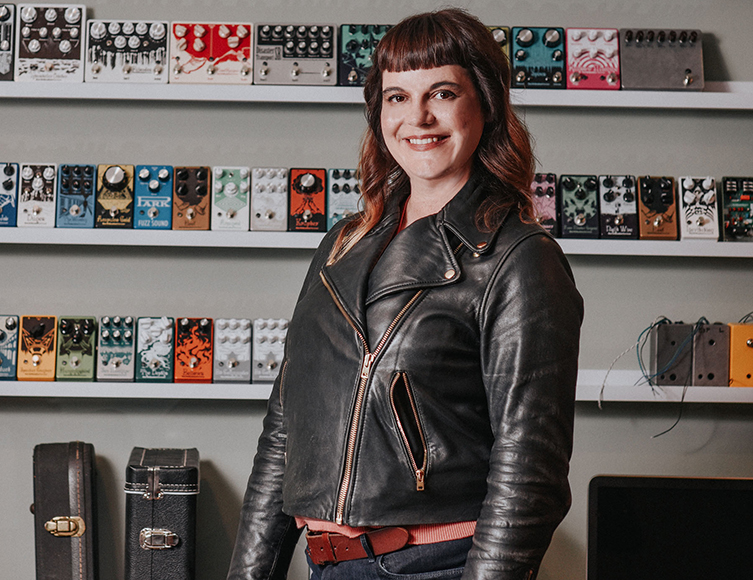
Contents
Popularity & Discontinuing Pedals
Early Days
Guitarguitar: So, for the people reading this, some of them won’t necessarily know the background of the company. Without making you go into the full story, EarthQuaker Devices started off in 2004 with Jamie learning how to fix his old overdrive pedal, right?
Julie Robbins: Yeah, that’s correct. He was doing a number of things at the time: tour managing, working in a record store, freelance graphic design. We were selling silverware on eBay for a while and yeah, his pedal broke. He opened it up to see how to fix it, got really fascinated, started tinkering, started experimenting. It really grew very gradually for the first five years. I kinda describe it like: around 2010 we were like, ‘Shit, we have a business!’ (laughs) It’s kinda of like the polar opposite of start-up culture, you know? This was so gradual and incremental, totally independent.
I think what made a big difference for us was when we started to hire employees and realised we couldn’t do everything ourselves. I actually had a full-time career outside of EarthQuaker until 2012. At that point, it was like 7 years of being in our lives, where I would do the book-keeping and help with different points of the production process, and it was all-consuming for Jamie.
Various growth points tied to various pedal launches: the Afterneath, Dispatch Master and Rainbow Machine were big gamechangers for us, really. They facilitated us moving out of the basement, making things a lot more official with employee benefits and things like that. The most recent game changer has been Plumes. That’s been wildly successful, we can’t keep up with the demand! That’s spurred more growth on our side, in turns of the workforce and things like that.
GG: That’s interesting about the Plumes pedal. It’s like a brighter, more powerful Tubescreamer, isn’t it?
JR: Yeah.
GG: Of course, that’s one of those effects that every pedal company has: they all do their own tubescreamer, so you never know which pedal’s gonna be the one that everyone goes mad for.
JR: Yeah, Jamie’s vision behind that is, he really wanted to make a pedal that was really accessible to people. I think sometimes we go in these experimental directions with, like, Rainbow Machines and Data Corrupters. I will kind of put pedals into two categories: there’s the pedals that are gonna inspire you to write your next record, and there are the pedals that you can use on your next tour for the record you’ve already recorded.
The Plumes would fall more into that category, of like, very middle of the road, appeals to a lot of people, did what Jamie thought a tubescreamer should do and then another piece of it was to make it really affordable and economical. We just tried to set it up for success like we do with every pedal and then people decide if they want it or not. This pedal just blew up! It exceeded all of our expectations. It’s great because I know it’s brought a lot of people to our brand. It’s maybe their first taste and then they get hooked.
GG: Haha, that’s the gateway pedal for them.
JR: The gateway pedal, that’s right!
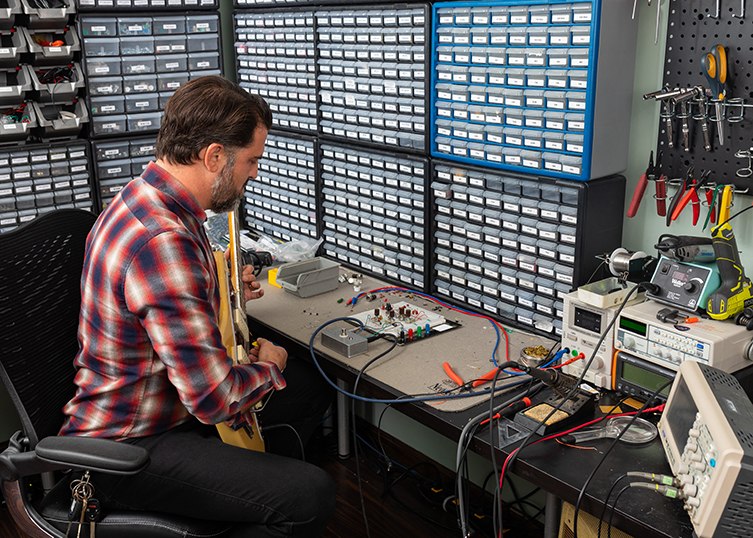
The Design Process
GG: Is there an overall design process when it comes to a new pedal? Is it like, ‘there’s a gap in our pedal offerings that we need to address and fill’ or is it more ‘I want to make a...’?
JR: Um, it would be more of the ‘I want to make’, uh-hmm. Jamie is such a genius with the design of pedals and he really does make things to his taste, and it’s very convenient that a lot of other people agree with that.
And then there’s the component of, you know, they come with a lifetime warranty, and having good customer service which consumers really appreciate. It’s a great combination, but Jamie definitely marches to the beat of his own drummer. He is a very creative person and he just can’t fake it. He can’t pretend to be interested in something he’s not interested in. So, even if you were to tell him ‘If you make this pedal, it’s gonna sell millions of units, it’s gonna be huge’, if it’s not something that captures his interest, it’s just not gonna happen.
I really try to stay out of his hair and let him execute his creative process and just support him however I can to bring these pedals into fruition. It’s a big team effort, it really is. There’s a lot of people involved, and the bigger we’ve gotten, the more complex launching a new pedal is, and the bigger our initial runs are, the more time we need to get there.

Popularity & Discontinuing Pedals
GG: Just before I get on to the staff and the community aspect of the company, it’s interesting what you said about Jamie there, about how he has to be interested in what he’s making, regardless of the sales potential. I wonder about the opposite: the EarthQuaker pedals that have existed in the past, that are no longer being made. Is it based on sales slowing down for them, or is there another reason to take them away?
JR: Well, there are a number of factors that go into those decisions. Sometimes a part becomes obsolete, because we use a lot of parts that are not manufactured any more. Trying to find sources for those parts in a consistent quality, that can be a reason. That’s been the reason behind a lot of limited edition pedals in the past. The other would be not letting our line get too huge, for a lot of reasons, like manufacturing 40 different pedals versus 60 or however many. Also, sometimes there’s maybe a significant change that has to happen, like in the manufacturing process, and all of the work that would need to go into updating it is just not worth it for the volume that sells.
Another reason could be, we’ve got something in the works that’s gonna be coming out relatively soon that scratches that same itch. So, there can be a number of reasons for it. It’s something that we don’t take lightly. Literally every pedal that we discontinued broke our hearts, and there’s always an interesting spike in demand and interest as soon as we discontinue it.
But ultimately, we can only do so much. It gets really unwieldy when you’re trying to do NAMM or something like that, where we’re trying to show all the pedals and there’s really a lot. It just stresses the system so we’ve learned to keep it at a manageable 40-ish pedals in our line (laughs).
GG: Just about manageable! In a typical month, how many pedals do EarthQuaker build and send out?
JR: Right now, we’re doing probably around 6000 a month.
GG: Wow! It’s one of those questions that people don’t often ask, and I’ve always wondered. Also, I’ve presumed that the Hoof fuzz is the most popular pedal. Is that the case?
JR: I actually haven’t looked at the sales rankings lately so if I told you, I’d just be making it up! (laughs) But the Hoof is a consistent top seller, kind of the way that I’m looking at things, because from month to month it might fluctuate depending on who’s stocking, who is placing a big order, but usually Plumes, Afterneath, Dispatch Master, Bit Commander, Rainbow Machine, those are all in the top ten. Sometimes one or the other will have a bigger month. I also feel really grateful that it’s pretty diversified across our line, so we don’t have like one pedal which makes the majority of our sales. While we sell a lot of units of Plumes, it’s less expensive so it’s probably comparable with a pedal that has a higher cost but sells less.
Something that we are not driven by, unlike a lot of other commercial endeavours, is profit. Our vision of success is broader than that. Does it feel good? Is everybody healthy? Things like that.
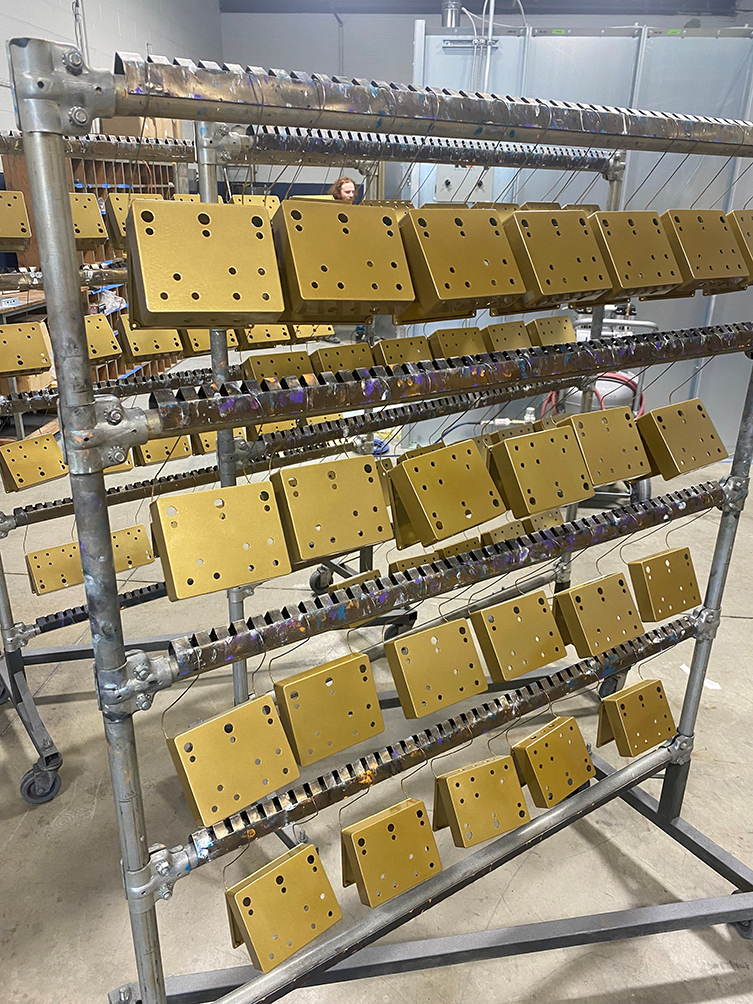
Community
GG: That’s a good answer! It’s kind of touching on something I was going to get to later on, which was: ‘what makes EarthQuaker Devices different from other pedal companies’, but I think during the process of our conversation, you’re kind of answering that! Watching the video you guys have on your site, and noting that you have most of the staff photographed and named on there too, it seems that the community/staff aspect is a really important factor for EarthQuaker. Is that correct?
JR: It is, for sure. We have, I think, 52 people working for us right now and every single one is vital. When we were growing, we didn’t have a marketing department or a videographer. When we decided to make our little mini movie, I wanted to have a document, like a snapshot or where we were at that time, and also to help highlight how many people are here and how much goes into it, which I think can help consumers understand why our pedals cost more than others that are cheaper.
Also, it helped people to understand that EarthQuaker is not just Julie and Jamie, it’s really all of these people. They’re vital parts of the process. At some point, Jamie was the only one answering the emails and doing all of that. Trying to expand the outside world’s view of what is actually making EarthQuaker tick, and also provide recognition to the fine folks that are working here every day, making sure things run smoothly and really taking their jobs seriously.
GG: Am I right in saying that most, if not all, of the employees are local musicians from the Akron music scene?
JR: Yeah, it’s really interesting. We did a workshop recently and one of the icebreakers was ‘how long have you been in the industry and what have your roles been?’ There were things that even I didn’t know about that the employees were mentioning that I found really interesting. There’s also a number of people who have a background in visual arts and design and that really lends itself to what we do: being creative, detail-oriented, things like that. I’m one of the only people who doesn’t play an instrument here!
GG: Haha, really?
JR: My instrument is a Microsoft Excel spreadsheet, and I can play it like a fucking fiddle! (laughs)
GG: Yeah! I reckon you could probably plug the Rainbow Machine into your Excel spreadsheet and get some good results.
JR: I’ve tried and it’s weird!
GG: We’re not ready for it yet.
JR: My younger brother is a brew master, he’s opening his own brewery; in the office next door, they’re drawing Marvel comics...it’s like my lot in life is to be totally surrounded by awesome things that are not my passion! (laughs)
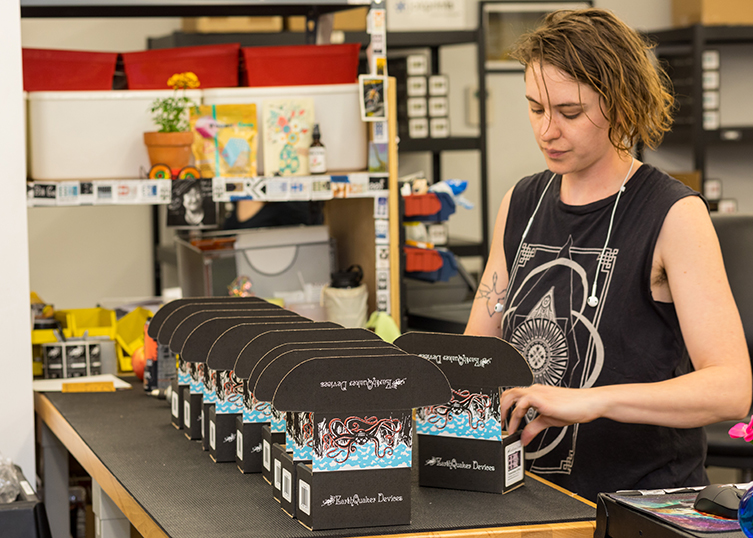
The Visuals
GG: That sucks! Sounds like an amazing atmosphere either way though! Now, you mention the visual art/graphics side of things. We always see pedals before we hear them, and EarthQuaker pedals are very good-looking and very distinctive. Is the visual element as important to the brand as the sonic element?
JR: Absolutely. Jamie’s background is as a graphic designer and that was something really important to him. He really...the way guitar pedals were looking, you know, when he was first starting, he was really on the leading edge of changing the look of that. The font, the two-tone...there’s been times when we’ve been like, ‘let’s put a third colour in there’, and he’s been like ‘nope’. (laughs) Also, it shows a lot of trust when he, say, lets someone else design a pedal, like for example the Life Pedal that we did with the band SUNN O))). Letting them take over the aesthetics was a big leap for him.
GG: You’re kind of reading my mind today, Julie! That was going to be my next question: we had the Life Pedal for about three seconds before it sold out...
JR: Right.
GG: And, as you say, it’s a collab with SUNN O))). Does EarthQuaker have any plans to do more artist collaborations in the future?
JR: Yep. Yes.
GG: (pause) Can you tell me any of those plans?
JR: (Instantly) No. (Bursts out laughing)
GG: Well, fine.
JR: Yeah!
GG: Haha, ok! That leads me on to a more general version of that question. We’re in the middle of the year now, and Winter NAMM, for what it was, has been and gone. Summer NAMM, I don’t think anyone’s bothering with, so what I’m leading up to is: are there any fun new things that EarthQuaker are working on that you are allowed to tell us about?
JR: No.
GG: Dammit.
JR: I know!
GG: So, there are new things on the way?
JR: Well, I can tell you that we’re working on fun new things. I can tell you that Jamie’s always designing, designing, designing. We have plans for releases but we really don’t want anyone to know about them until they are available in stores. The stage that everything is in right now is the pre-production stage. We need to work out any possible kinks in the build process or in the design, the manual, all those things. There’s a lot of work that goes into it. There’s a level of certainty that we have to have, and in order to execute that and be confident that we won’t have to change deadlines on people or push things back, I can’t say. I wish I could tell you everything, but I can tell you that it’s cool and you’re gonna love it when you do eventually find out about it! (laughs)
Whatever kind of musician you are, there is almost certainly an EarthQuaker Devices pedal that you hold dear to your heart. Whether a main component for your tone, or a ‘special effect’ pedal that gets utilised at key dramatic moments in your set or recording, EarthQuaker Devices are there, bringing us all fantastic sounds that are full of personality and inspiration.

